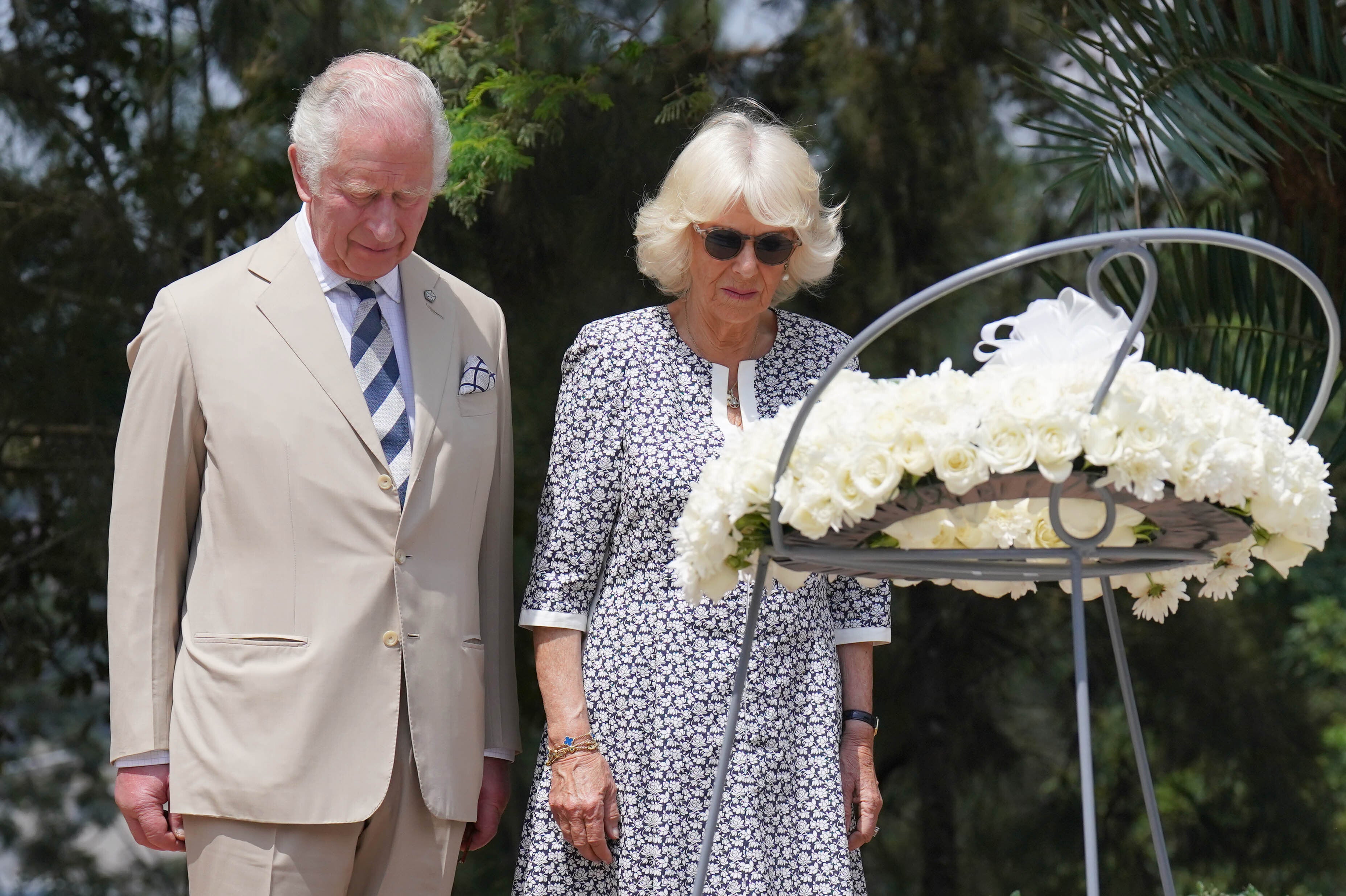Charles in plea not to repeat horrors as he sees grim legacy of Rwandan genocide
Charles stared at rows of skulls from victims of the 1994 killing spree.

Your support helps us to tell the story
From reproductive rights to climate change to Big Tech, The Independent is on the ground when the story is developing. Whether it's investigating the financials of Elon Musk's pro-Trump PAC or producing our latest documentary, 'The A Word', which shines a light on the American women fighting for reproductive rights, we know how important it is to parse out the facts from the messaging.
At such a critical moment in US history, we need reporters on the ground. Your donation allows us to keep sending journalists to speak to both sides of the story.
The Independent is trusted by Americans across the entire political spectrum. And unlike many other quality news outlets, we choose not to lock Americans out of our reporting and analysis with paywalls. We believe quality journalism should be available to everyone, paid for by those who can afford it.
Your support makes all the difference.The Prince of Wales came face-to-face with a grim legacy of the Rwandan genocide as he urged the world never to repeat the horrors of the atrocity.
Charles stared at rows of skulls from victims of the 1994 killing spree during a day spent attending a series of events recognising the trauma of survivors and hearing the stories of those murdered.
The heir to the throne said “this must never happen again, we shall continue to remember”, as he visited the Nyamata Church Genocide Memorial, where more than 10,000 people were murdered over two days, and was shown the skull remains.
Earlier, Charles and Camilla toured the Kigali Genocide Memorial and were shown the personal testimonies of families who donated pictures of smiling children and listed touching personal details about their loved ones.
The couple read intently the comments about the youngsters murdered and Charles reacted by saying: “Terrible, happens all too often.”
His wife lamented “what humans can do to humans”.
The duchess bonded with one survivor of the genocide during her visit, when she was hugged by Uzamukunda Walida, who was gang raped but now openly discusses her experience.
In 1994, hundreds of thousands of members of the Tutsi community were slaughtered in Rwanda by ethnic Hutu extremists.
The Nyamata Church Genocide Memorial, south of the Rwandan capital Kigali, contains the remains of more than 45,000 people killed in the church compound and the wider area between April 7 and May 14 in 1994.
In total 800,000 people, including three quarters of the country’s minority Tutsi population, died during 100 days of slaughter in Rwanda that year.
Charles heard how the militiamen killed Tutsi men outside the church who were trying to protect their families before turning on the women and children sheltering inside.
“They threw hand grenades in and then shot and hacked many of them to death,” said Rachel Murekatete, the memorial manager, who showed Charles around and pointed out hundreds of holes in the church’s wooden roof caused by shrapnel from the blasts.
Downstairs in a basement the prince was shown glass cases containing the skulls and bones of victims who had been burnt after being shot or hacked to death with machetes.
At the memorial in the capital, Charles and the wife Camilla had laid a wreath in memory of the victims, and outside the church, an hour’s drive from Kigali, he left another floral tribute and a handwritten message in the national Kinyarwanda language.
He said: “We will always remember the innocent souls that were killed in the genocide against the Tutsi in April 1994. Be strong Rwanda. Charles.”
Speaking afterwards, Ms Murekatete said the prince had appeared moved by what he had seen.
She added: “He said, ‘this must never happen again, we shall continue to remember”.
Later Charles, who during the day met Rwandan President Paul Kagame with his wife, hailed a reconciliation village as a “wonderful example to the rest of the world” after hearing how survivors and perpetrators of the 1994 genocide live side by side.
He toured the Mbyo village, built in 2005, where 384 Tutsis and Hutus successfully live and work together, and now the project has seen eight more created across the country to encourage unity and help those who lived through the atrocity to move on.
After listening to the stories of one Hutu perpetrator and one Tutsi, whose entire family was killed, he said he was “full of admiration” that they had managed to overcome the past, adding: “It must have been so difficult to be able to forgive these quite awful horrors.
“It’s been enormously heartening to hear how now you view the situation entirely as Rwandans, rather than Tutsi and Hutu, and it is a wonderful example I think to the rest of the world”.
Among those who greeted him at the village was Eric Murangwa, a former footballer who narrowly escaped death during the genocide, and who encouraged Charles to visit the memorial and reconciliation village when they met in Scotland in April.